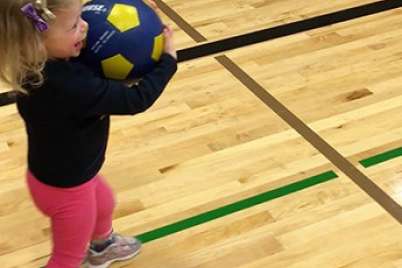
PLAY helps parents and teachers guide kids to physical literacy
Can your kid throw a ball? Play hopscotch? Skip rope or turn a somersault?
If you’re like many busy parents these days, you may not know.
That’s where PLAY comes in handy.
Developed by Canadian Sport for Life, PLAY — literally, “physical literacy assessment for youth” — is a practical way to ensure children develop fundamental movement skills, such as kicking, throwing, and balancing.
PLAY has various components. One is for coaches, one is for parents, and one is designed for kids, so they can figure out their own strengths and weaknesses. (Read some key points from the parents’ booklet.)
“We want to make sure kids learn the skills they need at a young age, so they feel comfortable participating in any type of physical activity,” says Pam Blanchfield, the City of Toronto’s manager of community recreation.
Blanchfield helped develop the PLAY assessment tools with Canadian Sport for Life, and says she and her team have been assessing PLAY skills in 1,200 children registered in 40 programs this year.
“Within four months, we had increased our kids’ physical literacy skills by four percent. They love learning this stuff,” she tells Active for Life.
“And next year, we’ll have 50 programs and 1,500 kids.”
Whether you’re a rec leader in your local community or a concerned parent, it’s all about teaching kids stuff they need so they can have fun on the playground and in gym class, she maintains.
And, just as importantly, it’s about teaching children skills they need to be active their entire lives.
“If kids don’t develop those basic moves, they feel self-conscious and they don’t participate as often.”
Lori Mambella knows first-hand what she’s talking about. As a child, Mambella was a high-performance athlete. She was on the Canadian Rhythmic Gymnastic Team, and she trained — a lot.
Fit? Sure, she was fit.
But, she says, she didn’t learn a lot of the basic physical literacy skills that kids need to be active for a lifetime. She never learned to ski or skate, for instance, because her coach — and society in general — didn’t understand the importance of multi-sport training and physical literacy.
“You have to be introduced to all the basic skills, if you’re going to have sport for life,” says Mambella, now the Parks, Recreation and Culture Services Department’s programs supervisor for the City of St. Catharines.
“To become physically literate, a child has to have a certain confidence level and competency that is inherent. They’ve mastered the skill. It’s not something they have to think about anymore.”
Why do these skills have to be taught? Because kids aren’t picking them up on the playground anymore.
Mambella points out that few children have the opportunity to play active games that we as parents, and previous generations, took for granted.
“There are a lot of kids that have never tried hopscotch. They can’t take skipping ropes to school anymore,” she notes.
“Here in Niagara, one of our school boards has banned balls on the playground because they’re too dangerous.”
If we take stuff away, we have to build those skills into a child’s life in other ways, she says.
We’ve all seen kids and heard stories about children who play video games instead of playing outside with their buddies.
“But unfortunately, just moving their thumbs isn’t enough,” she adds with a laugh.
“We can’t expect kids to learn physical literacy skills if we don’t assist somehow.”





